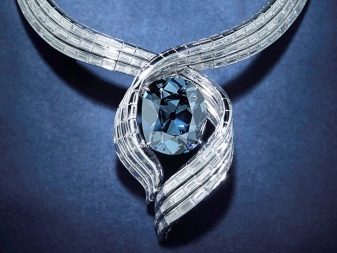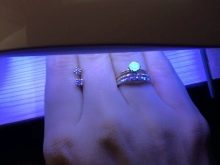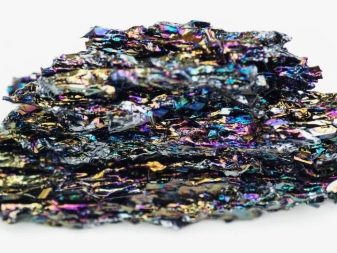Diamond is one of the most expensive and mysterious minerals, which has been widely used in various industrial fields. In jewelry, exclusively faceted crystals are used, because only in this form can one see its unique optical properties and enjoy the incredible play of colors. In pursuit of profit under the guise of this rare stone, synthetic material or even ordinary glass is often sold.
In order not to fall for the scammers, you need to know how a fake diamond differs from a real one, and what manipulations will help identify a fake.


Stone characteristics
In nature, diamond is quite rare, which leads to its high cost. Real stone is formed under the influence of high temperatures and pressure. It is incredibly solid and has good thermal conductivity. The raw crystal cannot be called attractive - it is dull, the surface is rough, with a gray coating and cracks. Only after cutting by master jewelers, the mineral will become transparent and will sparkle in sunlight.
The most common are colorless diamonds that look white or light gray before processing. But there are also stones of pale pink, yellow, brown and green. The rarest prey is the black gem.
The cost of 1 carat of rough diamond is at least $ 500. The price largely depends on the quality of the mineral and its size.
Jewelry with faceted diamonds is very expensive, but their beauty and brilliance are worth every cent, so it is not surprising that they are in great demand.Unfortunately, scammers who have learned to fake diamonds use this. To do this, someone artificially grows crystals, someone gives out cheaper minerals as a jewel, and someone completely gets the hang of a special way to process glass.
Only a professional can distinguish natural from high-quality artificial stone. Nevertheless, there are several ways to recognize a fake, and the manipulations are so simple that they can be easily done at home.



Check at home
It is not difficult to determine the authenticity of a diamond at home. To do this, perform the following manipulations.
- Inspect the stone in daylight - it should look beautiful from all sides. Fakes are usually the most attractive only from above, because this part is always in sight.
- A true diamond always remains cold, even if it is held in your hand for a long time. An artificial specimen quickly takes heat and holds it.
- Breathe on the mineral - if it fogs up, then you have a fake. The script always remains transparent.
- If you lower the pebble into the water, it will certainly drown, while the fake will float on the surface for some time. But if the alleged diamond also sank to the bottom, then after a few minutes you need to inspect it without removing it from the water. The edges of the natural stone will be blurred and poorly visible, and the outlines of the synthetic product will remain clear.
- Use a needle, toothpick or pipette to drip water onto a diamond. If a drop has formed and it does not spread, even when it is pierced with a thin sharp object, then the stone is real.
- In direct sunlight, the crystal should shimmer exclusively in shades of gray, but the fake will shine with all the colors of the rainbow.
- If you shine a small flashlight through the stone, and on the back side you will clearly see a ray of light, which means that your hands are fake. In natural, multiple refraction of light rays occurs due to which only the light halo is visible from the back side.
- Under ultraviolet radiation, a diamond sparkles even brighter than under sunlight, and a fake usually sparkles with yellow-green hues.
- A magnifier with a 20-30-fold magnification will help distinguish a diamond from a fake. If you examine a natural stone through it, then you can notice small defects and blotches.
Diamond, unlike other stones always sold in gold or platinum high-grade frames. The gold product should have a sample of 585, and on a platinum - 900.
In addition, the real pebble is inserted into the frame so that its lower part is open.



Third-Party Validation
You can verify the authenticity of diamond at home in more complex ways that involve the use of third-party substances.
- Butter. If any fatty substance, for example, vegetable oil, is applied to the surface of the mineral and applied to a smooth vertical surface, it will stick. When conducting similar manipulations with an artificial specimen, it simply slides down.
- Hydrochloric acid. An authentic crystal has high strength and resistance to aggressive substances. It retains its original appearance and attractiveness, even if hydrochloric acid gets on its surface. And the appearance of the fake pebble will noticeably change - cracks and deformations will appear.
- A sharp temperature drop. Try to heat the gem over an open fire, for example with a lighter, and then sharply place it in cold water. If it is real, then nothing will happen, and the fake after such tests will become cracked, cloudy or deformed.



Types and differences of analogues
Instead of the natural diamond from which diamonds are made to inlaid jewelry, artificial analogues are often used. It can be quartz, cubic zirconia, zirconium, rock crystal, moussanite or ordinary glass.It’s quite difficult for a simple buyer to distinguish high-quality fakes, but if you know the main distinguishing features of the listed materials, then it will still be possible to independently recognize the counterfeit.
- Zircon - artificially grown diamond, which in appearance is very similar to a real gem, but it is very cheap. You can identify the fake using a magnifier. In zirconium, as a rule, there are colored impurities, and the back face is always bifurcated. In addition, putting the jewelry on your hand and looking through it, you can see the skin. Diamond does not allow this to be done, which is explained by the peculiarity of its internal structure.


- Cubic zirconia is zirconia, therefore, has almost the same characteristics as the above instance. The main distinguishing features include high light conductivity and orange glow.
Also on the label jewelry with cubic zirconias usually indicate the abbreviation CZ.

- Mussanite - a synthetic stone closest to the original. It can be recognized by its gray-green hue, and the presence of long narrow channels inside the product, which are visible under a magnifying glass. In addition, compared to real diamond, mussanite shines much brighter.


- Glass - the cheapest analogue of a gem. The easiest way to distinguish a natural mineral from glass is to try to read the text through it by attaching the product to a newspaper or magazine. The high density of diamond will not allow this.

- Rhinestone - not a bad replacement for a diamond, because by their external characteristics they are very similar. To distinguish a diamond from rock crystal, it is enough to drop water on it, and if the drop does not spread, then this is a real gem.


In order not to bother checking, and not wondering how to distinguish a diamond from quartz, glass or other stones, It is recommended to purchase jewelry exclusively in jewelry stores. Only in this case, you can ask the seller for a certificate of authenticity for jewelry inlaid with natural minerals.

On how to determine the authenticity of a diamond at home, you will learn from the video below.










